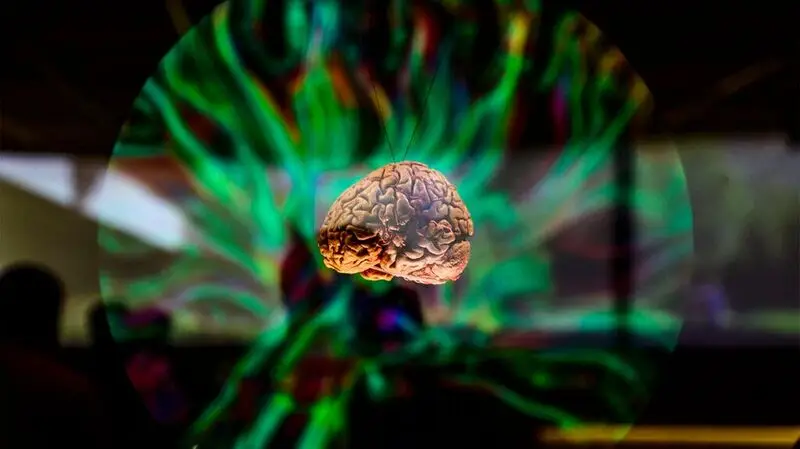
- A genome-wide association study has identified a range of regions of the genome that control the size of subcortical brain structures.
- An international consortium of researchers found they could predict the volume of these structures using polygenic scores they developed using large cohorts from multiple ancestries.
- They also found a link between genes influencing brain volume and Parkinson’s disease and ADHD.
Brain volume has been linked to Parkinson’s disease and attention deficit hyperactivity disorder (ADHD) risk by an international group of researchers.
A number of new genetic variants associated with the volume of nine subcortical brain structures were identified in a genome-wide association study.
Researchers showed they could predict measurements of parts of the brain using polygenic scores they developed using these variants, which worked across cohorts from different ancestries.
Lead author Miguel Rentería, PhD leads the Computational Neurogenomics Lab in the Mental Health & Neuroscience Program at the QIMR Berghofer Medical Research Institute in Herston, Australia.
He told Medical News Today that he and his colleagues “have been studying the genetics of brain structure since the ENIGMA Consortium was founded in 2009.“
“My team works at the intersection of human genetics and neuroscience, with a focus on how genetic variation shapes individual differences in behaviour, cognition, and mental health,“ he explained.
“Past research, including from twin studies and ENIGMA collaborators, has shown that brain morphology is moderately heritable and linked to brain-related conditions. Our goal was to map the genetic variants that influence brain structure and examine if these same genes also affect the risk of brain-related disorders,” noted Rentería.
The results of the team’s research appear in
Subcortical brain volume has been linked to a number of developmental, psychiatric and neurological disorders.
To investigate the role of genetics on subcortical brain volume, researchers looked at the genomes of 74,898 participants of European ancestry, alongside analysis of the volumes of the:
brainstem , the brain’s “control center,” responsible for vital functions including breathing and sleepcaudate nucleus , playing key roles in movementputamen , linked to learning and language use- hippocampus, involved in learning and memory processes
globus pallidus , which regulates proprioception, or the ability to sense where the body is positioned in spacethalamus , which processes sensory inputsnucleus accumbens , which controls wakefulnessamygdala , involved in emotional regulation, particularly stress and anxiety- and the ventral diencephalon.
All of these measurements were taken from MRI scans.
They discovered 254 independent loci — or regions of the genome — significantly associated with brain volume, and found that these were responsible for about 35% of variance seen between participants, suggesting the rest of the difference seen was due to environmental factors.
Using the genetic variants discovered on these loci they developed a polygenic score, which they could use to predict the volume of different parts of the subcortical brain structures.
They tested this polygenic score using a UK Biobank cohort, and found that it was predictive of volume of subcortical brain structures with and without adjusting for overall intracranial volume, including across people of different ancestries.
They also found that polygenic scores they calculated could predict the volume of subcortical brain structures in people under the age of 18.
Next, they looked at the interplay between the influence of genes on volume of different subcortical brain structures and neurological and psychiatric conditions.
Parkinson’s disease was correlated with genes linked to intracranial and subcortical brain volumes. ADHD, insomnia, and neuroticism were negatively correlated with genes controlling intracranial volume.
Conversely, the opposite was found for birth weight, birth head circumference, and height, which was positively correlated with intracranial volume, confirming that height is associated with larger intracranial volume.
Rentería told MNT:
“We observed a positive genetic correlation between Parkinson’s disease and eight regional brain volumes, and a negative correlation between ADHD and three brain volumes. It’s important to note that these correlations were independent, and our study participants came from both general population and clinical cohorts, without being specifically enriched for ADHD or Parkinson’s.“
“My theory is that the underlying mechanisms involve genes crucial to brain development, growth, and aging processes,“ he suggested.
“We plan to further investigate to identify the exact biological pathways involved. Understanding these mechanisms could illuminate how brain structure impacts susceptibility to both neurodegenerative and psychiatric conditions, potentially guiding future therapeutic strategies,” Rentería added.
Polygenic scores are calculated using data obtained from the cohort used to predict a phenotype associated with a certain genotype.
A criticism of them has been that they may not be predictive when used in cohorts of different ancestries to the original cohort used to develop the score. In this study, the polygenic score developed was found to be effective across people of different ancestries.
Brittany Ferri, PhD, an occupational therapist at the National Council on Aging, who was not involved in this research, told MNT that polygenic scores “can be appropriate when based on solid ethical and scientific foundations.“
This kind of measurement “leverages genetic information to explore brain structure variations, potentially helping us know more about neurological and psychiatric disorders,“ she explained.
“However, how accurate and relevant it is should be carefully looked at to make sure the advantages are worth the risks and ethical concerns,“ Ferri cautioned.
“One major limitation is the incomplete capture of genetic factors by polygenic scores. They might miss out on rare genetic variants or the interactions between different genes. These scores do not factor in environmental factors that are important for brain development,” she added.
Clifford Segil, DO, a neurologist at Providence Saint John’s Health Center in Santa Monica, CA, also not involved in the current research, told MNT that the results were novel, and needed to be repeated using MRIs on more people.
“Genetic studies note increased risk but no guaranteed bad outcomes. The limitation as a clinical neurologist is if a patient has a ‘risk factor genetic profile’ what I am supposed to do with this information. I do not have any treatment to increase the size of a subcortical brain structure,” Segil noted.
He went on to emphasize that: “Parkinson’s is clearly a disease of subcortical brain structures, which is well established, and this study’s results warrant repeat searching [of] a subcortical brain structure that would cause problems with attention, which is not well established.”





